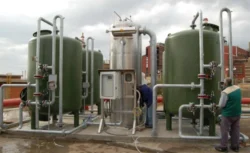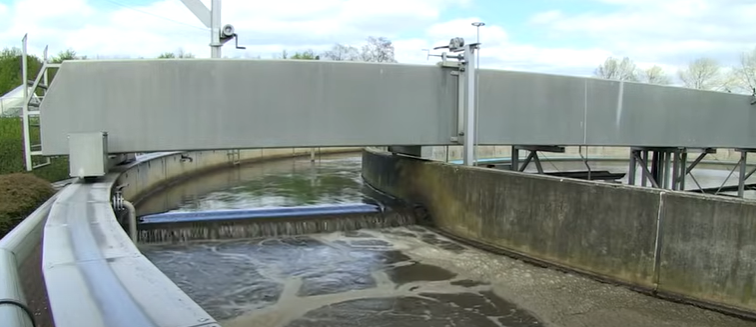
Wastewater Recycling Processes

As the planet faces intensifying water scarcity driven by climate change, population growth, and environmental degradation, communities around the world are turning to an innovative solution: recycling wastewater. By treating and purifying municipal and industrial wastewater through advanced processes, this valuable resource can be reclaimed and reused rather than discharged as waste into sensitive ecosystems. Wastewater recycling, also called water reclamation or reuse, is rapidly becoming an essential strategy for achieving long-term water sustainability and security.
The Multi-Stage Recycling Process
The wastewater recycling journey begins as soon as sewage enters a treatment facility. First, bar screens and grit chambers remove large debris like plastics, rags, and sediment that could damage equipment downstream. The wastewater then flows into primary sedimentation tanks where heavy particles sink to the bottom while grease and lighter materials float to the surface and can be skimmed off. This initial clarifying step sets the stage for further treatment.
Secondary Treatment
Next is the secondary stage where microbiological treatment takes place. The primary effluent is pumped into aeration tanks that are injected with air, allowing aerobic microbes to digest and break down organic matter and contaminants present in the wastewater. This substantially reduces the biological oxygen demand (BOD) and total suspended solids remaining.
Trickling filters, rotating biological contactors, and activated sludge systems are among the common processes that cultivate microbes to treat the water. Anoxic tanks can follow, promoting facultative microbes that convert nitrogen-containing compounds like ammonia and nitrates into harmless nitrogen gas through denitrification. Finally, clarifiers remove excess microbes and any remaining particulates, producing cleaner effluent.
Tertiary Treatment
While secondary treatment produces water suitable for discharge into natural waterways when properly disinfected, a tertiary treatment stage is needed to remove contaminants more completely and meet higher water quality standards for recycling and reuse applications.
The tertiary treatment utilizes an array of chemical and physical processes including nutrient removal, media filtration, carbon adsorption, reverse osmosis membrane separation, and advanced oxidation with powerful disinfectants like chlorine, ozone, and hydrogen peroxide. Ultraviolet irradiation can also provide disinfection by destroying pathogens with UV light. With tertiary treatment, the purified effluent water is essentially as clean and safe as typical sources of freshwater.
Recycled Water Reuse Applications
1. Non-Potable Reuse
Recycled water meeting tertiary treatment standards can serve many non-potable applications. Parks, golf courses, and agricultural operations can use the reclaimed water for landscape and crop irrigation, reducing demands on limited potable supplies and lessening impacts on aquifers and surface waters.
Recycled water is also suitable for uses like dust control, artificial lake replenishment, and toilet flushing in commercial buildings. Certain industrial facilities like power plants and refineries can make use of recycled water for operations that do not require potable quality, such as cooling towers, boiler makeup, and manufacturing processes involving heating and mechanical uses. This allows businesses to operate more sustainably, reducing overall regional demands on freshwater sources.
2. Potable Reuse
With additional advanced treatment steps, recycled wastewater can even achieve potable water quality, overcoming the stigma many associate with the concept of consuming “recycled sewage.” Ultrafiltration followed by reverse osmosis produces highly purified water by forcing it through dense membranes that trap all microbes, solids, and most dissolved molecules except for water itself.
Any lingering contaminants are then destroyed by combining ultraviolet disinfection with powerful oxidants like hydrogen peroxide in an advanced oxidation process. The end result is clean, safe, potable-quality water.
3. Indirect and Direct Potable Reuse
There are multiple ways this highly treated recycled water can be incorporated back into municipal drinking water systems in a process called potable reuse. The simplest approach is indirect potable reuse, where the purified effluent is discharged into an environmental buffer like a lake, river, or groundwater aquifer where it blends with natural water supplies for further remediation before eventually being captured again, treated at a conventional drinking water plant, and distributed.
More advanced is direct potable reuse that introduces purified recycled water directly back into drinking water treatment plants for blending with conventionally treated supplies, or even directly pipelines it into municipal distribution systems with no interim environmental buffer. Direct potable reuse requires overcoming understandable public aversions but is already practiced in locations suffering severe water scarcity like Windhoek, Namibia, and parts of the U.S. As droughts intensify and populations swell worldwide, direct potable recycling of wastewater is expected to become more broadly adopted to meet potable demands sustainably.
The Sustainability Benefits of Water Reuse
Beyond just producing a new local water source, wastewater reuse and recycling affords additional sustainability benefits. It prevents the discharge of harmful effluents into vulnerable ecosystems and removes micropollutant contaminants of emerging concern like residual pharmaceuticals and personal care products.
Recovering resources and energy from wastewater streams through technologies like microbial fuel cells, algae cultivation for biofuels, and mineral extraction creates valuable co-products that improve the circular economy approach. Constructing engineered wetlands helps polish tertiary effluent while providing wildlife habitat. With water reuse effectively closing the loop, precious freshwater resources can be preserved and allocated primarily for potable needs.
Advancing Wastewater Recycling Technologies
Realizing a future of sustainable water resources worldwide will require continued advances and widespread adoption of wastewater recycling technologies and processes. Electrochemical methods like electrocoagulation could enhance solids removal efficiency.
Membrane separation innovations like forward osmosis improve performance and reduce energy use and costs. Real-time monitoring and automated process controls allow facilities to optimize their treatment operations dynamically. Public outreach and education are still needed to overcome negative perceptions and gain acceptance of potable reuse practices.
A Circular Solution to Water Scarcity
But as the realities of worsening water scarcity set in globally due to climate change, population pressures, and ecological degradation, the incentives for communities to beneficially reuse their wastewater will only grow stronger. The proverb “waste not, want not” holds true when it comes to the limited freshwater resources essential for human survival and economic prosperity.
By proactively treating wastewater through multi-stage recycling processes, municipalities and industries can create a reliable, sustainable, local water supply while protecting the environment and human health. Turning waste streams into repurposed resources is the essence of the circular economy paradigm, which promises far-reaching co-benefits when applied intelligently to holistic water management practices. With the right policies, technologies, and public support, eliminating the very concept of “waste” water through effective recycling and reuse is an achievable and crucial goal for water security for all in the 21st century.

